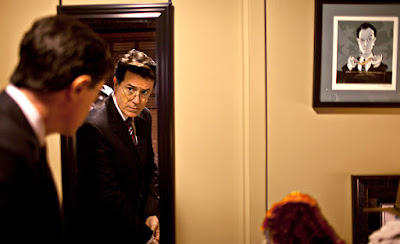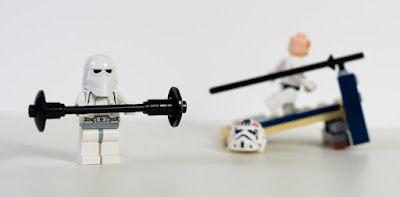General-purpose computers are astounding. They're so astounding that our society still struggles to come to grips with them, what they're for, how to accommodate them, and how to cope with them. This brings us back to something you might be sick of reading about:
copyright.
But bear with me, because this is about something more important. The shape of the copyright wars clues us into an upcoming fight over the destiny of the general-purpose computer itself.
In the beginning, we had packaged software and we had sneakernet. We had floppy disks in ziplock bags, in cardboard boxes, hung on pegs in shops, and sold like candy bars and magazines. They were eminently susceptible to duplication, were duplicated quickly, and widely, and this was to the great chagrin of people who made and sold software.
Enter
Digital Rights Management in its most primitive forms: let's call it DRM 0.96. They introduced physical indicia which the software checked for—deliberate damage, dongles, hidden sectors—and challenge-response protocols that required possession of large, unwieldy manuals that were difficult to copy.
These failed for two reasons. First, they were commercially unpopular, because they reduced the usefulness of the software to the legitimate purchasers. Honest buyers resented the non-functionality of their backups, they hated the loss of scarce ports to the authentication dongles, and they chafed at the inconvenience of having to lug around large manuals when they wanted to run their software. Second, these didn't stop pirates, who found it trivial to patch the software and bypass authentication. People who took the software without paying for it were untouched.
Typically, the way this happened is a programmer, with possession of technology and expertise of equivalent sophistication to the software vendor itself, would reverse-engineer the software and circulate cracked versions. While this sounds highly specialized, it really wasn't. Figuring out what recalcitrant programs were doing and routing around media defects were core skills for computer programmers, especially in the era of fragile floppy disks and the rough-and-ready early days of software development. Anti-copying strategies only became more fraught as networks spread; once we had bulletin boards, online services, USENET newsgroups and mailing lists, the expertise of people who figured out how to defeat these authentication systems could be packaged up in software as little crack files. As network capacity increased, the cracked disk images or executables themselves could be spread on their own.
This gave us DRM 1.0. By 1996, it became clear to everyone in the halls of power that there was something important about to happen. We were about to have an information economy, whatever the Hell that was. They assumed it meant an economy where we bought and sold information. Information technology improves efficiency, so imagine the markets that an information economy would have! You could buy a book for a day, you could sell the right to watch the movie for a Euro, and then you could rent out the pause button for a penny per second. You could sell movies for one price in one country, at another price in another, and so on. The fantasies of those days were like a boring science fiction adaptation of the Old Testament Book of Numbers, a tedious enumeration of every permutation of things people do with information—and
what might be charged for each.
Unfortunately for them, none of this would be possible unless they could control how people use their computers and the files we transfer to them. After all, it was easy to talk about selling someone a tune to download to their MP3 player, but not so easy to talk about the the right to move music from the player to another device. But how the Hell could you stop that once you'd given them the file? In order to do so, you needed to figure out how to stop computers from running certain programs and inspecting certain files and processes. For example, you could encrypt the file, and then require the user to run a program that only unlocked the file under certain circumstances.
But, as they say on the Internet,
now you have two problems.
by Cory Doctorow, Boing Boing |
Read more: 
















